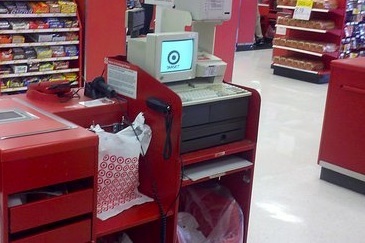It is no secret, at We Live Security we strongly
believe in the importance of education. We don’t just “live” security;
we “live” educating people about security. Naturally, any time we hear
about gains in this particular arena, it is an exciting thing. The city
of Chicago, Illinois
recently announced a change to the curriculum
for schools in their district that would introduce children as young as
primary school to computer science concepts. It would also allow
students to count computer science as a core subject that fulfills
graduation requirements, rather than simply be an elective.
This sounds like a big step in the right direction, preparing
students to deal with an important aspect of twenty-first century life.
But what does the boost for computer science, often affectionately
abbreviated to comp-sci, mean in the grand scheme of things?
Why does K-12 comp-sci matter?
For those of us who have been out of high school for more than a few
years, this announcement from Chicago might come as a surprise. Aren’t
all kids getting computer science classes already? You would think so,
with so many of us adults already using computers in our jobs,
regardless of our job title. And how many more of us are required to
have some level of proficiency with technology, no matter what field we
work in? Yet, schools are just now starting to introduce computer
related curricula?
The percentage of people needing to use computers proficiently seems
to be rapidly approaching 100%, at least for skilled jobs in the US. And
in terms of job security and satisfaction, technical jobs have much to
offer. In lists of the
best, the most
lucrative and most
in-demand jobs, those positions utilizing
computer experts are
always in the
top five.
The demand for people who know how to program or maintain computers and
networks–especially those who know how to do these things
securely–vastly outpaces the supply. (See the We Live Security story on
Huge shortage of cyber-defenders.)
Given that there is a massive need for people to take jobs that
require computer skills, one might think that getting kids interested in
computers would be considered something of the utmost importance. But
apparently this is not yet the case. As far as we can tell, in most
states in the US, if computer science is offered at all, it is
considered an elective subject, which means it does not count towards a
student’s graduation requirements. Many students do not have room in
their schedule to include electives, and indeed they have to go out of
their way to get exposure to those subjects not considered part of their
core curriculum.
While Chicago is to be lauded for its recent changes, it is still
just one of only a handful of locales in the US that allows computer
science to be counted towards high school graduation requirements. With
the changes proposed in Chicago, students at all levels of the primary
and secondary systems will have more access to computer-related classes.
At the elementary and middle school level, students will have access to
a computer science “
pathway”,
which will allow them to get an additional focus on that subject. At
the high school level, there will be an “Exploring Computer Science”
class at each school, and certain schools will also offer an Advanced
Placement (AP) Computer Science Class, in addition to the ability to use
computer science classes towards graduation.
What is happening elsewhere?
Let me preface the following information with a bit of a caveat: I
was educated in the US and can only profess a thorough understanding of
this one system. As I was reading the information on the state of
computer science in the American education system, I naturally wondered
how this compared with that of other countries. From what I was able to
glean from a search on graduation requirements elsewhere in the world,
it seems as though the US is quite a bit behind other countries. But it
is also apparent that direct comparisons are difficult at best.
Every country seems to have a slightly different focus in their
educational system, and this is apparent not only by viewing what is
considered a “core subject”, but by looking at what elective classes are
actually chosen by students. There are a few subjects that are
internationally considered required subjects: Reading, Math, and
Science. (N.B. In this context Science includes only traditional
sciences, not computer science). Beyond this, each country adds other
subjects that they consider to be exceptionally important.
To get an idea of the differences in culture, let’s look at a couple
of very dissimilar examples, both of which are considered very
successful in terms of their test results for those universal “core
subjects”.
In Finland, which is generally the country in Europe whose
scores
in Reading, Math and Science are consistently highest, there is less
focus on taking standardized tests or doing hours’ worth of homework.
Students are strongly encouraged to take multiple languages aside from
their native one, and being strong in natural languages seems to be a
primary focus for their educational system.
In Korea, another very
highly-rated country, things are
very different.
Students typically go to school for incredibly long hours and have
homework on top of that. The curriculum is not so strongly focused on
any one area of education, though students are expected to learn both
Korean and English. In both Korean and Finland, like in the US, computer
science is considered an elective. But in practice, Korean students get
much more exposure to computer-related topics, in part because those
long days give them more time to get exposure to a wider variety of
subjects.
Another important difference in the culture of schools in Finland as
opposed to Korea is that there is much more focus on digital literacy
and ethics in the latter, and by 2015
all textbooks in Korea are expected to be digital.
This is a long way from either country considering computer science a
required science subject, but it does at least expose Korean students to
computers as a powerful tool, and they are indeed taught about using
that tool ethically.
But digital literacy is not the same as understanding how computers
actually work. There is a range of different types of classes covering
computer related subjects that begins at “digital literacy”, includes
“information and communication technology” and ends with true “computer
science”. Most countries do not cover computer science in this latter
sense, but cover something much more simplistic. A class or standardized
test in “computer science” in many countries may cover no more than
basic Java programming or familiarity with office productivity suites.
For those of us in a computer-related field, this definition is
laughably inadequate.
This paper written by Simon Peyton Jones
from Microsoft Research, in conjunction with several international
educators, offers a very thorough breakdown of what computer science
actually entails in various countries.
The current situation can be, frankly, a little depressing. Very few
places offer in-depth computer education to students before college,
those that do may employ teachers that arguably have less experience in
the subject than the average student. As a result the classes have
little utility and are often declining in popularity. But fortunately,
there are things that you and I can do to help this situation, to ensure
that our future coworkers are better prepared.
What can we do about it?
The things that you and I can do about the current state of computer
related education can be broken down into two areas: Encouraging change
in policy, and helping expose students to computers and code. Here are a
few suggestions for how you can get involved:
- Ask your local teacher about computer education
This is especially important for parents, but it can also be
informative for those people looking to suggest changes or offer their
expertise: Does your local school teach children how to use computers?
Do they teach how to use computers safely? What other subjects do they
cover, such as programming or algorithms?
- Sign a petition to make computer science count
Over two dozen petitions are currently available to be signed on Change.org, in conjunction with Code.org, to
make computer science classes count towards graduation requirements.
If you live in one of those states, please sign the relevant petition or
contact your local representatives to express your concern. Code.org
has some sample letters to send government leaders or schools.
- Find additional resources at Code.org
There are so many options and resources available for such a variety
of interested people to help at Code.org, it is hard to know where to
start. Their website has an incredible variety of resources available
for people that want to help spread the word about how important it is
to educate kids about computers. For those who are educators, or who
have kids they would like to inspire, they have even more options to offer. Their tutorials for beginners (not just kids!) including the Hour of Code are fantastic, and very popular. If you are a software engineer, they include yet another list of ways you can help. And last but not least, donations are always helpful.
- Find or start a class to help kids
The following are a few other sources for people that are interested
in participating in groups to mentor kids in Science and Technology:
There are also plenty of organizations on a local level that offer
mentorship opportunities, which are a great way to expose kids to
careers in Science and Technology (especially those of us in less
obvious or traditional areas of computer-related employment). For
instance:
Kids are now growing up in a world where computers are a part of
almost every home, which means many of them are accessing the Internet
without a good understanding of how it works, or how to use it safely.
By educating them early and often on how best to use these powerful
tools, we will not only help protect them from potential harm, but give
them the promise of lucrative and meaningful employment when they reach
adulthood.
Do you know of schools that are doing a good job when it comes
to computer science, ethical computing, and computer security? We would
love to hear some good news. Leave a comment and let us know.

 There was a report last week about a spam botnet
using "Internet of Things" devices—a refrigerator, even!—but the
evidence supporting this claim feels a little circumstantial.
There was a report last week about a spam botnet
using "Internet of Things" devices—a refrigerator, even!—but the
evidence supporting this claim feels a little circumstantial.










 Piecing
together analysis from various researchers reveals that the cyber-crime
ring behind these attacks used a highly sophisticated set of tools to
first intercept the payment data and then transfer the stolen
information to servers controlled by the criminals. While it is still
not known how the attackers broke into Target's network, or other
retailers for that matter, in the first place, details are emerging
about what steps the memory-parsing software took once inside.
Piecing
together analysis from various researchers reveals that the cyber-crime
ring behind these attacks used a highly sophisticated set of tools to
first intercept the payment data and then transfer the stolen
information to servers controlled by the criminals. While it is still
not known how the attackers broke into Target's network, or other
retailers for that matter, in the first place, details are emerging
about what steps the memory-parsing software took once inside.

